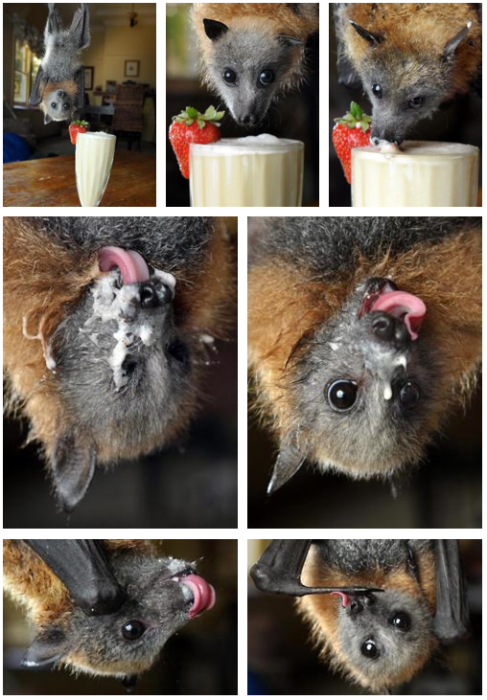Apparently after 87 pages filled with uncommon scientific terms, Microsoft Word just gives up on spell checking. Basically I killed spell check. FUN FAKTS.
Anyway, back to Tuesday’s urban ramble.
Before continuing, I would like to clarify that I am addressing the recolonization of wildlife following human development. That is, how wildlife communities respond as human settlements urbanize (eg. develop into large towns or cities). Why is this an important clarification? Because developing land for settlement rather than for agriculture places different pressures on the local wildlife. For instance, there may be less concrete to cover potential burrow space or fewer people to scare away grazers, but farmers will discourage any potential threat to their livelihood. Farming is a tough business without Bambi’s family eating everything.
Now, back to business.
Given my understanding of ecology, I can give a rough idea of how recolonization by wildlife in urban areas works. This is not perfect (you could teach a whole class on this very subject), so bear with me.
Consider urbanization of a habitat like a natural disaster; everything is changed and initially there is nothing but what humans have planted or allowed to remain (grass, trees, flowers, etc). Wild animals are exterminated or driven out to nearby wilderness, where their numbers grow to the point that some species move into human settlements just to find enough food. The order in which species move into urban areas does not follow set rules, but the order in which species successfully adapt does. Raptors, for instance, can fly in to the city all they want, but they won’t succeed unless prey animals recolonize first.
First to succeed are the small animals that can reproduce fast, these feed on/live in the surviving plants. Their size allows them to easily avoid humans (they may not have even been driven out in the first place) and their r-selected reproduction strategy (that is, they reproduce, really rell-I mean well) ensures that a few man-caused deaths do not greatly impact their population. Species that can rebound this quickly are small rodents like rats and mice (rabbits too if there’s spaces to build warrens), as well as many smaller birds that can fly away from disturbance and easily return to smaller urban trees.
Following the wee squinnies, scavengers like raccoons and crows will quickly move in, with the abundance of man-made trash and various rodents to feed on. Coyotes and foxes, being larger and slower to reproduce, do have a harder time. They stick out and come into contact with domestic animals more, so humans actively discourage their settling nearby. Even in rural areas, the presence of coyotes is met with violent opposition. However, they can and do learn to adapt.
As prey populations increase and the habitat stabilizes, predators can move in. However, urban environments severely limit the species that are able to colonize. Without large prey or any inclination to be near humans, large predators stay away from cities. As a result, the most common predators in urban areas are birds of prey. A variety of sizes, many species can coexist in a city, feeding on a variety of small birds and rodents. Besides any larger trees remaining, raptors can nest on building ledges and around support systems for bridges, overpasses and other raised structures.
That covers a general overview of wildlife recolonization. Something to keep in mind though, is that despite nature’s amazing ability to bounce back, urban environments are made to support humans, not wildlife and thus do not favor biodiversity. From the different categories I mentioned (small animals, scavengers, predators), it is a MUCH more limited number of species that will recolonize than that originally lived in a given habitat. I mean, the sheer amount of concrete in even a small city is enough to increase local temperature. Many species require some very specific conditions in order to live and reproduce.
So beyond “PEOPLE ARE BAD AND YOU SHOULD FEEL BAD”, what am I getting at? DO SOMETHING. In a broad sense, support local, national and international conservation efforts. In a more personal sense, try to make your habitat a habitat for other species; plant some trees, build a bat box, set up an owl house, etc. See what species are hurting in your area, and how you can help. Maybe start a science blog and guilt trip strangers and friends into supporting conservation!
One of the most important things is, if you have a conflict with animals, try to find an eco-friendly solution. Pests like mice and rats may be far from even hearing of the endangered species list, but plenty of raptors that depend on them aren’t. Choosing to poison household pests means you could also be poisoning local wildlife that think they’ve scored a weak and easy meal. Options like sonic repellants and snap traps can keep EVERYONE happy without impacting the rest of the food chain.
For bothersome and/or scary animals that are not an immediate threat, choose avoidance first. For instance, if you choose to attack a rattlesnake rather than back away, 1. you’re ignoring its very helpful suggestion to GO AWAY AND WE’LL ALL BE HAPPY and 2. you’re prolonging contact, which means you’re more likely to get bitten then if you’d just left it alone. Remember: people are big and scary, animals do not react kindly when scared, so just walk away.
For immediate threats, well…I’ll leave y’all to assess the situation, but generally running and screaming is a bad idea.
Resources for those interested:
Create A Certified Wildlife Habitat
Barnowlboxes.com (They sell, you guessed it! Barn owl and bat boxes and make the important point that both provide natural pest control)



